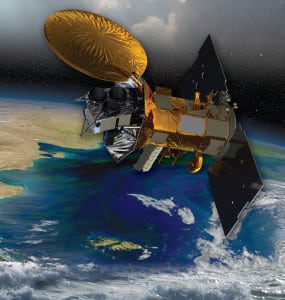Latest News

Artist’s rendering of the Aquarius/SAC-D satellite. The Aquarius mission studied the interactions between changes in the ocean circulation, global water cycle and climate by measuring ocean surface salinity. Photo: NASA
[Via Satellite 06-18-2015] The Satélite de Aplicaciones Científicas (SAC)-D satellite observatory, a collaborative project between NASA and Argentina’s space agency, Comisión Nacional de Actividades Espaciales (CONAE), with participation from Brazil, Canada, France and Italy, ended June 8 when an essential part of the power and attitude control system ceased operating. According to NASA, preliminary indications are that an onboard hardware component called a Remote Terminal Unit (RTU) shut down, which caused the loss of onboard power regulation and spacecraft attitude stabilization.
NASA launched the SAC-D mission in June 2011. The U.S. space agency built the Aquarius instrument, which demonstrated that scientifically significant measurements of salinity could be made from space. It was also the first mission to combine use of passive (radiometer) and active (radar) measurements at L band. The Aquarius instrument successfully achieved its science objectives and completed its primary three-year mission in November 2014.
CONAE provided the SAC-D spacecraft, an optical camera, a thermal camera in collaboration with Canada, a microwave radiometer, sensors developed by various Argentine institutions, and the mission operations center in Argentina. France and Italy also contributed instruments to the satellite.
Get the latest Via Satellite news!
Subscribe Now